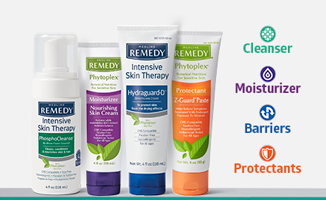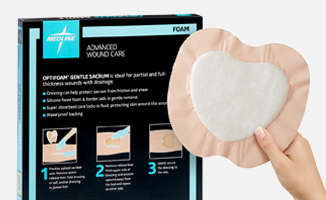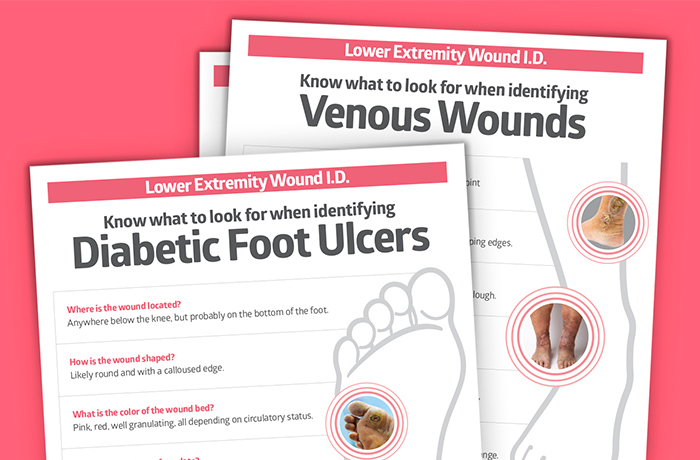4 smart strategies to achieve standardization in nursing practice
Guide staff behavior to drive better outcomes.

The need for standardized care has always been on the radar of administrators who want to improve efficiencies, but some clinicians may be skeptical of this approach. It may be viewed as “cookie-cutter medicine” that prevents them from providing more personalized care.
Standardization in nursing practice, however, doesn’t mean eliminating all variations in care. Instead, the focus is on eliminating unnecessary variations that stray from evidence-based guidelines and contribute to negative outcomes. For a better patient experience, care should be consistent regardless of the clinician on duty.
How do you help build a culture to drive consistent, quality patient care? Remove the guesswork from clinical practices by making it easy for staff to do the right thing at the right time. That way, they have more availability to deliver the personalized care that patients often require.
1 in 3
patients don’t receive the care recommended by evidence-based guidelines.¹
25%
of patients get unnecessary or even harmful care that falls outside these guidelines.¹
Why reduce variations in care?
In addition to the improved patient outcomes, there’s a strong business case for standardization. When patients are surveyed about how they choose a hospital, quality of care is a key factor in their decision.²
Additionally, standardizing the products facilities use can lead to cost savings. When caregivers use different or unnecessary products to treat the same condition, it’s inefficient and causes cost variations that hurt a facility’s bottom line.
Healthcare providers understand the need for standardization, but they’re divided on how to achieve it. Without everyone on the same page, it can be difficult for facilities to find the right approach.
How can you eliminate the guesswork and empower staff to follow best practice care now? We’ve gathered some practical, time-saving methods to make it easy for you and your team to reduce care variation.
4 ways to standardize care in your facility
1
Organize the supply room in an intuitive, easy-to-use way.
Is your supply room enabling staff to deliver their best care? A messy space can slow everyone down. The valuable time it takes to track down the right supplies is better spent on patient care. Make your supply room easy to navigate so that your team can find what they’re looking for in the middle of a busy shift and use their time more efficiently.
- Consider using a system of products to manage specific skin conditions such as venous leg ulcers or pressure injuries—and organize the products around those condition risks.
- Build on system-of-products organization with color coding. Attach a color to each system and place the appropriate color-coded tab at the top of each shelf. Staff tend to dislike color-coded bins, however, as they make it difficult to see products.
- Make products easy to access. If a facility is not ready to organize by system of products, organize products by size to make them easier to grab off the shelf. Keep smaller products at chest level or higher and bulkier items on lower shelves.
- Make sure products are stored in areas that are easy to access.
- Take a cue from retail spaces and use “shelf talkers”—cardboard or plastic signs on shelves that help customers quickly locate products—in the supply room.
- Always keep your supply room organized, and avoid over- or under-stocking it.
- Keep all the supplies staff might need during a shift in one central supply room. It’s impractical to expect caregivers to access supplies from multiple spaces, especially if they’re on other floors or must be ordered from an off-site location.
2
Less is more: Simplify treatment options.
We often assume that more choices are always better, but that’s not always the case. During a busy shift, caregivers make hundreds of decisions. Over a prolonged period, people can experience “decision fatigue,” a decline in their abilities to exercise sound judgment when making decisions.
“A caregiver has about three seconds to find a product in a supply area. When there are too many choices, how would they ever know what to use?”

Kim Kehoe
BSN, RN, CWOCN, DAPWCA, Medline Clinical Education Specialist, Acute Care Division
By limiting the options to one or two products for every clinical use, it’s easier for staff to make the best choices and reduce variation in care. For example, color-coded skin care products make it easier for both caregivers and patients to quickly choose the right product for the right task.

3
Product design matters.
Packaging may not be the first thing that comes to mind when you’re choosing products for your facility. But even the most innovative, effective products may not improve outcomes if they’re too difficult to apply. Educational packaging with step-by-step instructions comes in handy when busy caregivers must apply an unfamiliar product or one they use infrequently. For some people, it helps to see how to apply the product, and they may prefer to learn from quick, how-to videos on proper application.

4
Secure buy-in and support at all levels within your organization.
In many organizations, change starts at the top. The leaders implement change, and everyone follows. Many healthcare facilities don’t work that way. To achieve a standardized approach to care, people at every level of the organization, from administrators to clinicians, must get on board. It’s important to identify the key decision makers throughout the organization to achieve an objective. For example, to standardize and limit product choices, the Purchasing Manager is a crucial player.
“You’d think if you start at the top, change would trickle down, but it doesn’t happen. So, think about who needs to be consulted or involved in order to standardize practice.”

Phillip Meyers
RN-CWS, Skin Health Acute Sales Representative
Frontline staff are short on time and need resources that make it easier to eliminate variations in care. Provide them with easy-to-access tools—clinical guidelines, decision trees, posters and charts—that make treatment protocols clear and eliminate confusion. Place them in highly visible places and review them with staff often. That way, it’s easier to keep best practices top of mind, and get quick refreshers as needed.

Key takeaway
It’s not always easy to find the balance between standardized care and a personalized approach. You can empower caregivers to improve outcomes with these four time-saving strategies: using intuitive design in the supply room, simplifying treatment options, opting for products with educational packaging and getting key decision makers on board. It’s easier to implement these strategies with the right clinical partner—find one that supports you with a holistic Skin Health Solution, including a system of products, educational resources and best practice guidance.
References:
- Berwick DM, Hackbarth AD. Eliminating Waste in US Health Care. JAMA. 2012;307(14):1513–1516. doi:10.1001/jama.2012.362
- Bahadori, M., Teymourzadeh, E., Ravangard, R., Nasiri, A., Raadabadi, M., & Alimohammadzadeh, K. (2016). Factors contributing towards patient’s choice of a hospital clinic from the patients’ and managers’ perspective. Electronic physician, 8(5), 2378–2387. https://doi.org/10.19082/2378
- Tierney, J. (2011, August 18). Do You Suffer From Decision Fatigue? The New York Times. Retrieved August 19, 2022, from https://www.nytimes.com/2011/08/21/magazine/do-you-suffer-from-decision-fatigue.html



